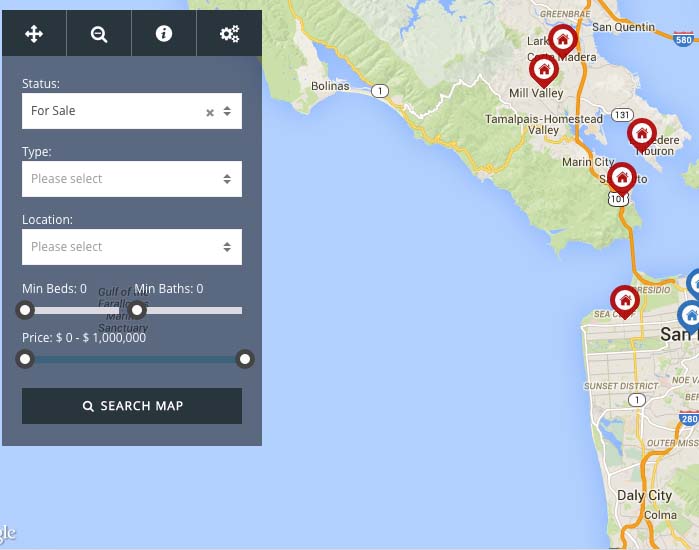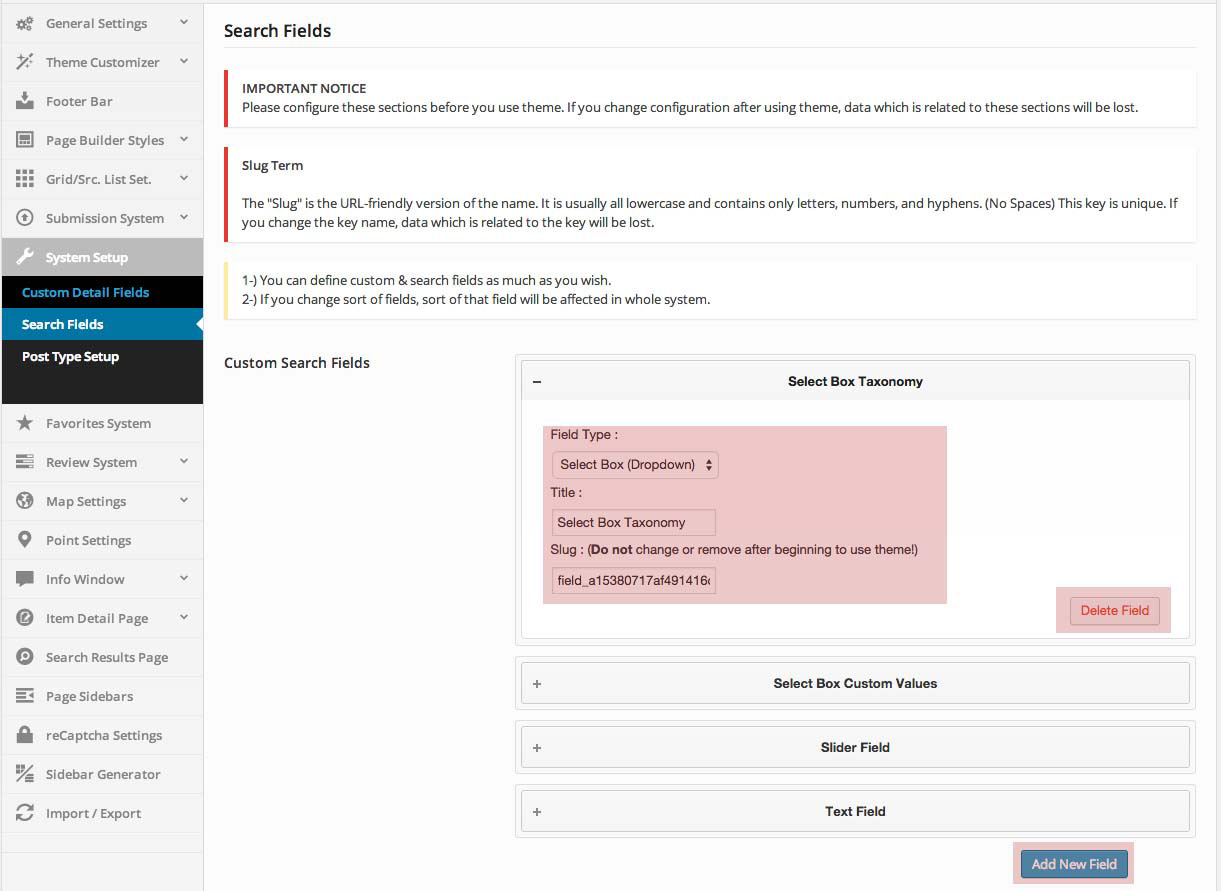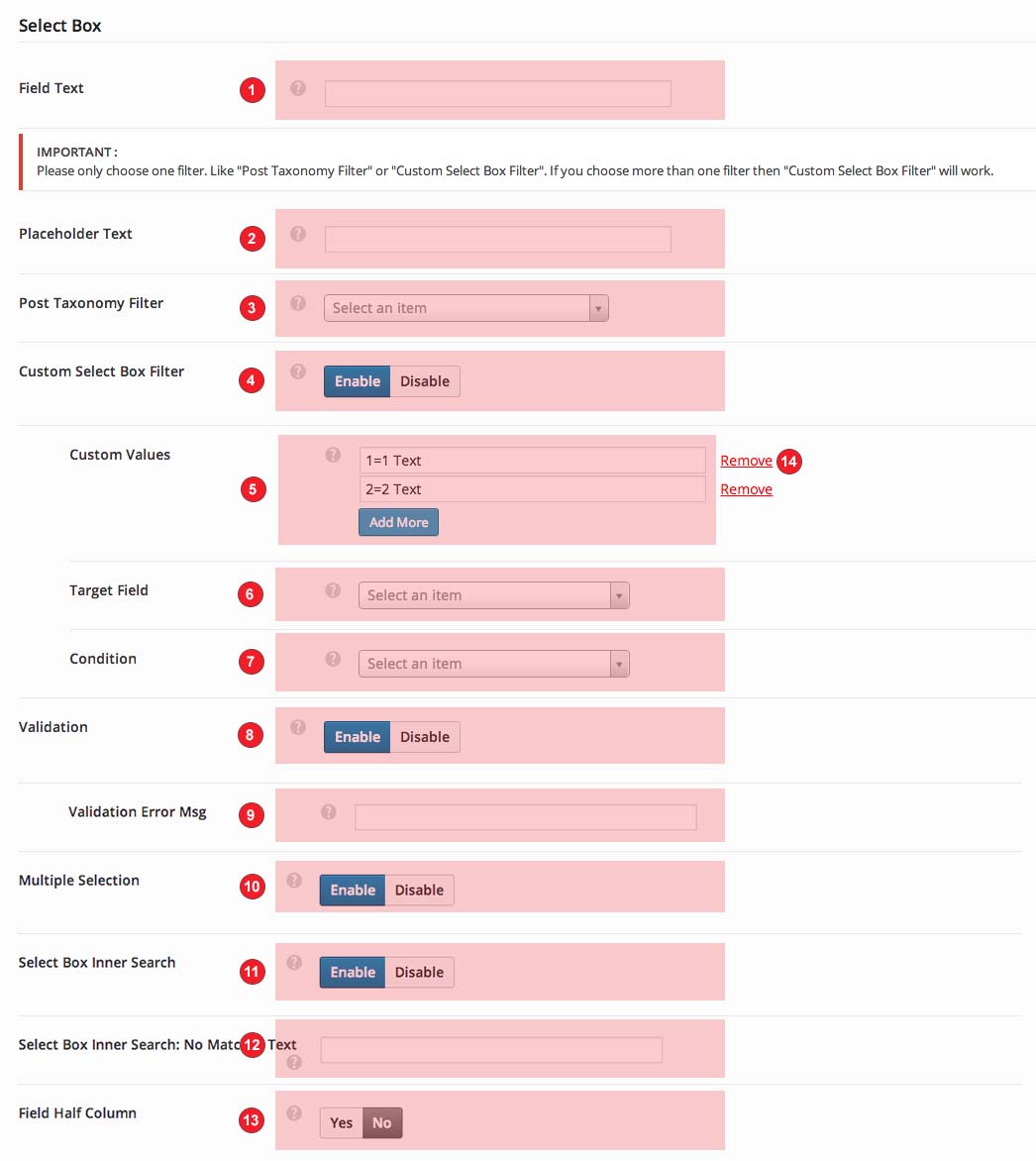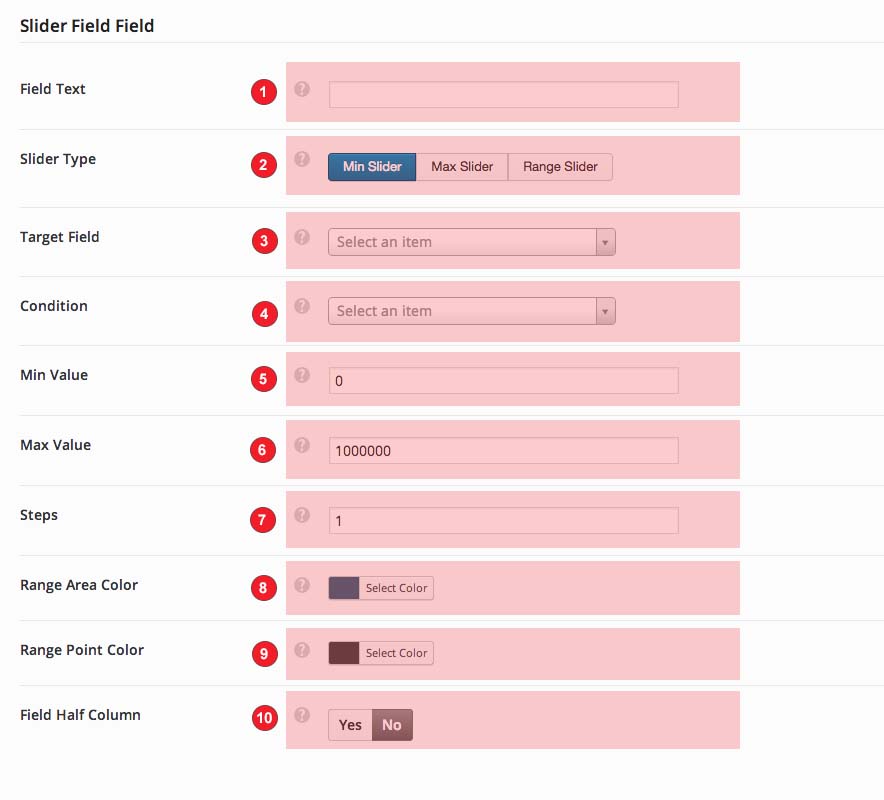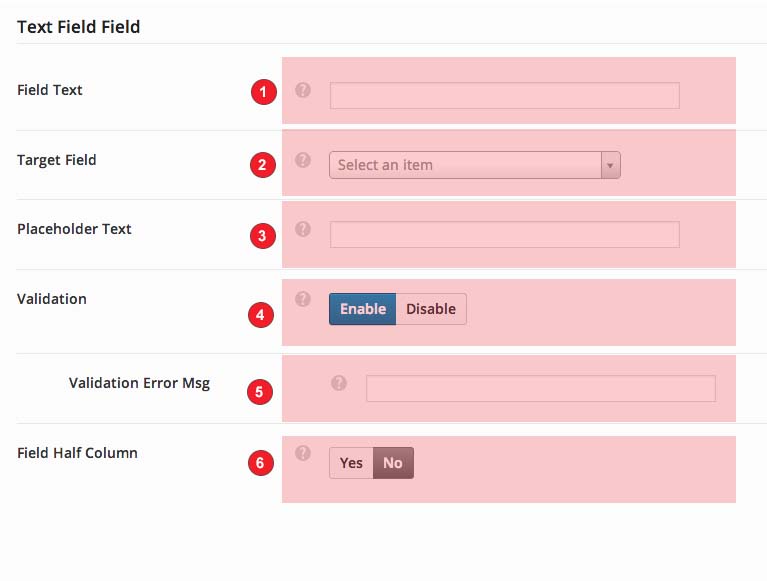Instruction
Search Fields allow you to make a search in the Taxonomies & Custom Fields which are added by you. Both WordPress PF Widget Search and PF Map Search are configured in this section.
PointFinder Search Fields consist of two sections. The first section is the section where we define these fields. And the second section is the section where we edit the configurations of each field.
How to create Fields
After selecting System Setup > Search Fields by opening Options Panel from WordPress Admin Panel > PF Settingssection, you can edit an existing field, delete any existing fields or add a new field by clicking on Add New Field button in the new page. You should only click on Delete Field button on the detail window of the previously added fields to delete them.
After completing field adding or deleting process by clicking on Save Changes button, you can change the order or create an order for the fields that you wish.
While adding new fields, you will be required to fill in various sections which are Field Title, Slug and Type. Please fill in these sections in accordance with the information below.
- Field Title : The title of this field. You can use “space and A-Z a-z 0-9”. Do not use Field word in this section
- Slug : The “Slug” is the URL-friendly version of the name. It is usually all lowercase and contains only letters, numbers, and hyphens. (No Spaces) This key is unique. If you change the key name, data which is related to the key will be lost.
Do not use space,dot,comma and other chars. only numbers and words acceptable. - Type : Type of this field.
How to manage Field Options?
- Field Text: This is the name of the field to be displayed on this field. If you leave it empty, no text will be displayed on the search form. (Optional)
- Placeholder Text: It is the placeholder text to be displayed in this field. (Optional)
- Post Taxonomy Filter: You can link this selectbox field with Taxonomies. After this process, you will not be required to activate Custom Select Box Filter. This selectbox content will directly be taken as Taxonomies.
- Custom Select Box Filter: If you didn’t activate Post Taxonomy Filter option, you can use this option and ensure that the filter values which are defined by you are displayed in this selectbox.
- Custom Values:The values to be entered into this section should in accordance with this format; value=visible text
VALUE just like slug, does not allow any spaces or additional characters to be used. You must create a contiguous value using the letters and numbers only.
VISIBLE TEXT section is section which will be displayed to the user and you can fill it as you wish. - Target Field: It defines the custom field in which the values selected in this field will be searched.
- Condition: It defines the search condition between the Custom field and this Search field.
- Validation: Should the validation be made?
- Validation Error Message: It is the error message if any error occurs during validation.
- Multiple Selection: Should multiple selection be allowed?
- Select Box Inner Search: It adds a search engine which ensures the criterion to be searched in the selectbox is found when a couple of letters of such criterion are entered.
- Select Box Inner Search No Match Text: The text to be displayed if no match for the search is found in the Search box.
- Field Half Colum: You can display this field as 50% column on front end website upload form. IF you activate this section, you should also activate this option for the next field for the remaining 50% section next to this field.
- Remove: By clicking on this section, you can delete the section on that line.
- Field Text: This is the name of the field to be displayed on this field. If you leave it empty, no text will be displayed on the search form. (Optional)
- Slider Type:Type of Slider
- Target Field: It defines the custom field in which the values selected in this field will be searched.
- Condition: It defines the search condition between the Custom field and this Search field.
- Min Value: Minimum value of this slider.
- Max Value: Maximum value of this slider.
- Steps: Steps which will use while increase the slider value.
- Range Area Color
- Range Point Color
- Field Half Colum: You can display this field as 50% column on front end website upload form. IF you activate this section, you should also activate this option for the next field for the remaining 50% section next to this field.
- Field Text: This is the name of the field to be displayed on this field. If you leave it empty, no text will be displayed on the search form. (Optional)
- Target Field: It defines the custom field in which the values selected in this field will be searched.
- Placeholder Text: It is the placeholder text to be displayed in this field. (Optional)
- Validation: Should the validation be made?
- Validation Error Message: It is the error message if any error occurs during validation.
- Field Half Colum: You can display this field as 50% column on front end website upload form. IF you activate this section, you should also activate this option for the next field for the remaining 50% section next to this field.
